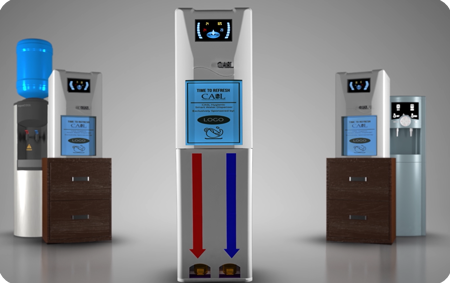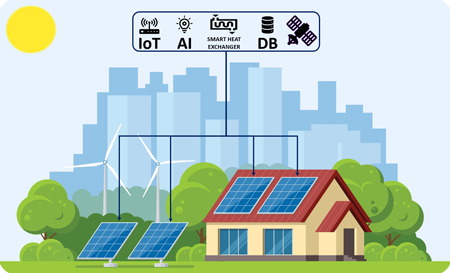Overview of CAESL’s Inventions
As an innovation-driven group, CAESL is on a mission to offer unique, state-of-the-art water and energy solutions. As an experienced team with a background in developing advanced sustainable solutions for houses and buildings, we have a view to supporting the world leaders’ goal of NET ZERO cities and products. We have a team of distinguished designers and consultants (from both industry and academia) who are specialised in designing, developing, identifying, and or creating innovative solutions. Below, our current invention projects are briefly described:
1.Smart Water Dispensers

Water coolers and dispensers in public/work settings have been removed, taped off, or unused due to the risk of cross-contamination (spread by touching). This issue was significantly deepened during the pandemic and the increased risk of Covid-19 transmission.
CASEL has developed a state-of-the-art patented water dispensing system to drive consumer health and safety. This smart technology can be called “the next generation of water dispensers.”
Benefits:
- Minimizing the risk of using water dispensers in public places
- Promotes a healthy brand image
- Help reduce the production and use of water bottles
2.Smart Solar Panels

High ambient temperatures have several negative impacts on the performance and efficiency of PV cells and panels.
CAESL has developed an innovative thermal absorber heat exchanger that can improve the performance and efficiency of PV panels significantly. This patent-protected innovation can be easily installed into the space behind any standard solar panel and includes a smart controller system with a powerful optimization engine that smartly controls the performance of the heat exchanger.
Benefits:
- Higher electricity production;
- Improves the effective lifespan of solar panels;
- Improves the return on investment of solar panels;
- Does not use expensive fluids;
- Do not need any changes in the geometry of the panel: in this absorber system, there will be no need to change the structure of the PV panel, while the use of other systems (in comparison) will change the structure of both the panel itself and the supporting bases;
- Does not need high maintenance compared to other cooling systems;
- Supports the net zero concepts and does not produce carbon dioxide as such;
- Is resilient to climate/weather change.
